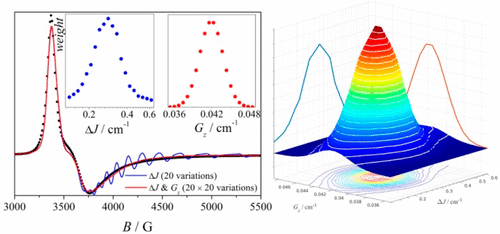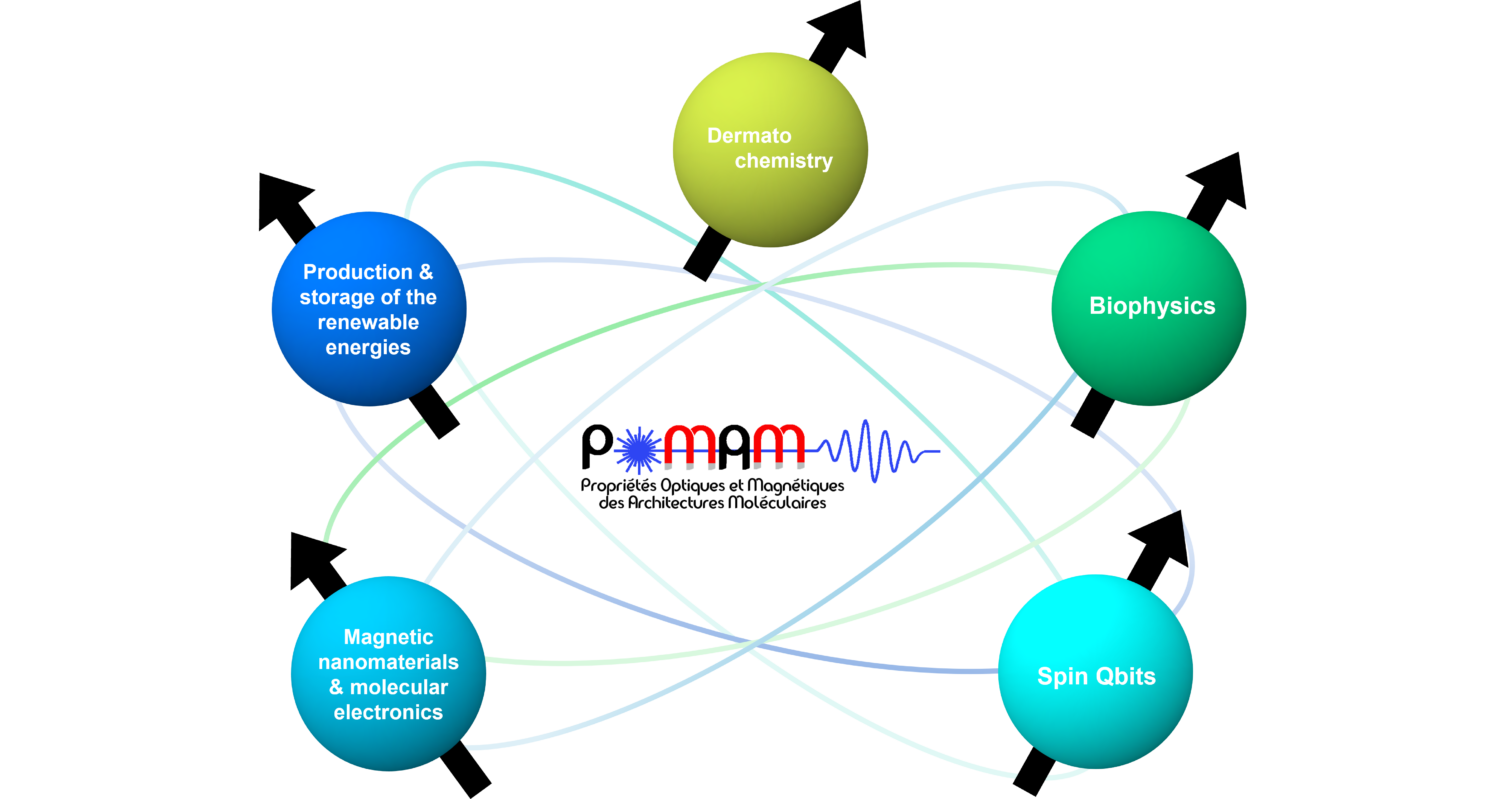Determination of the Distributions of the Spin-Hamiltonian Parameters in Spin Triangles: A Combined Magnetic Susceptometry and Electron Paramagnetic Resonance Spectroscopic Study of the Highly Symmetric [Cr3O(PhCOO)6(py)3](ClO4)·0.5py
Inorganic Chemistry, 2018. Abstract:
Abstract:
Magnetic susceptibility and X-band electron paramagnetic resonance (EPR) studies have been carried out on the highly symmetric [Cr3O(PhCOO)6(py)3](ClO4)·0.5py (1; py = pyridine), whose cation exhibits a D3h crystallographically imposed molecular symmetry. While magnetic susceptibility data can be interpreted with an equilateral magnetic model described by the effective multispin Hamiltonian Ĥ = −2J(Ŝ1·Ŝ2 + Ŝ2·Ŝ3 + Ŝ3·Ŝ1), EPR data require an isosceles model described by the multispin Hamiltonian Ĥ = −2J(Ŝ1·Ŝ2 + Ŝ2·Ŝ3) – 2J′Ŝ3·Ŝ1, where ΔJ = J – J′ ≠ 0. Moreover, EPR data reveal the interplay of antisymmetric exchange (or Dzyaloshinskii–Moriya) interactions, described by a 2G(Ŝ1 × Ŝ2 + Ŝ2 × Ŝ3 + Ŝ3 × Ŝ1) term, which induce significant anisotropy to the ST = 1/2 ground state of 1, as well as an important broadening of the g⊥ resonance (g strain). Through careful analysis of these data and in conjunction with neutron scattering data, this g strain can be deconvoluted into distributions of the individual spin-Hamiltonian parameters ΔJ and |G|. This method of analysis provides simultaneous estimates of the central values and distribution profiles of the spin-Hamiltonian parameters, which are shown not to be described by monodisperse values.
